Mode d’emploi Indesit NIS 41 V (EU) Sèche-linge
Besoin d'un mode d’emploi pour votre Indesit NIS 41 V (EU) Sèche-linge ? Ci-dessous, vous pouvez consulter et télécharger gratuitement le mode d’emploi PDF en français. Ce produit a actuellement 5 questions fréquemment posées, 0 commentaires et 0 votes. Si ce n'est pas le mode d’emploi que vous souhaitez, veuillez nous contacter.
Votre produit est défectueux et le mode d’emploi n’offre aucune solution ? Rendez-vous à un Repair Café pour obtenir des services de réparation gratuits.
Mode d’emploi
Loading…

Loading…
Évaluation
Dites-nous ce que vous pensez du Indesit NIS 41 V (EU) Sèche-linge en laissant une note de produit. Vous voulez partager vos expériences avec ce produit ou poser une question ? Veuillez laisser un commentaire au bas de la page.En savoir plus sur ce mode d’emploi
Nous comprenons qu’il est agréable d’avoir un mode d’emploi papier pour vos Indesit NIS 41 V (EU) Sèche-linge. Vous pouvez toujours télécharger le mode d’emploi depuis notre site Web et l’imprimer vous-même. Si vous souhaitez disposer d’un mode d’emploi original, nous vous recommandons de contacter Indesit. Ils pourront peut-être fournir un mode d’emploi original. Recherchez-vous le mode d’emploi de votre Indesit NIS 41 V (EU) Sèche-linge dans une autre langue ? Choisissez votre langue préférée sur notre page d’accueil et recherchez le numéro de modèle pour voir si nous l’avons disponible.
Caractéristiques
| Marque | Indesit |
| Modèle | NIS 41 V (EU) |
| Catégorie | Sèche-linges |
| Type de fichier | |
| Taille du fichier | 1.27 MB |
Tous les modes d’emploi pour Indesit Sèche-linges
Plus de modes d’emploi de Sèche-linges
Foire aux questions sur Indesit NIS 41 V (EU) Sèche-linge
Notre équipe d’assistance recherche des informations utiles sur les produits et des réponses aux questions fréquemment posées. Si vous trouvez une inexactitude dans notre foire aux questions, veuillez nous le faire savoir en utilisant notre formulaire de contact.
Pourquoi de tambour de mon sèche-linge est-il plus grand que celui de ma machine à laver, même s'ils ont la même capacité ? Vérifié
Pour bien sécher, un sèche-linge doit avoir de l’air. Ceci demande de la place et c’est pourquoi le tambour doit être plus grand.
Cela a été utile (3004) En savoir plusQuelle est la différence entre un sécheur à condensation et un sécheur ventilé ? Vérifié
Dans un sécheur à condensation, la vapeur d’eau condensée est évacuée et recueillie dans un réservoir interne. Dans un séchoir ventilé, l’air chaud et humide est évacué par un tuyau, par exemple par une fenêtre. Un sécheur ventilé est moins cher à utiliser qu’un sécheur à condensation
Cela a été utile (869) En savoir plusPuis-je empiler mon sèche-linge et ma machine à laver ? Vérifié
En général, il est possible d’empiler directement un sèche-linge et une machine à laver directement l’un sur l’autre. Ceci ne fonctionne qu’avec les modèles à chargement frontal. Toutefois, il est conseillé d’utiliser un accessoire de montage pour ce faire. Cela permet d’éviter que les machines ne vibrent et ne tombent et d’éviter d’endommager la machine inférieure.
Cela a été utile (700) En savoir plusPuis-je brancher un sèche-linge à une rallonge ? Vérifié
Il n'est pas permis de brancher les appareils nécessitant de grandes quantités d'électricité, comme un sèche-linge à toutes les rallonges. Vérifiez la consommation électrique du sèche-linge, indiquée en watts, et contrôlez si la rallonge peut supporter cela. Il existe des rallonges avec des câbles plus épais, conçues pour les gros appareils.
Cela a été utile (544) En savoir plusQuelle est la différence d'utilisation entre un lave-linge séchant et un lave-linge et sèche-linge séparés ? Vérifié
Le plus grand avantage d'un lave-linge séchant est qu'il prend moins de place. Cependant, un sèche-linge séparé sèchera plus qu'une lave-linge séchant. Un lave-linge séchant consomme également relativement plus d'énergie et a besoin de plus de temps.
Cela a été utile (533) En savoir plus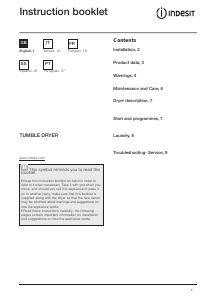


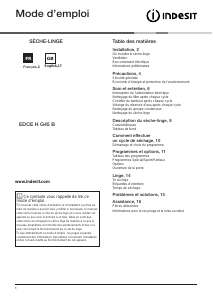
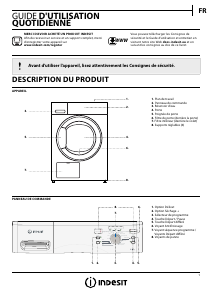
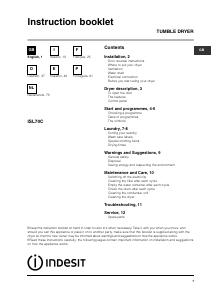
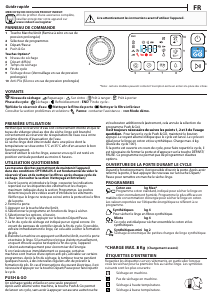
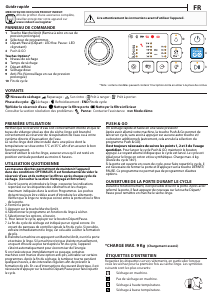
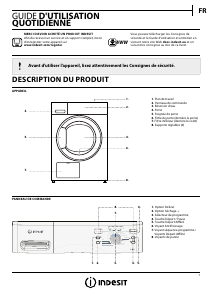
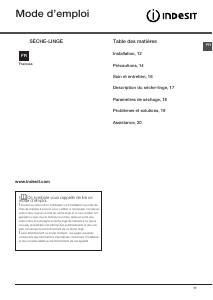

Joignez-vous à la conversation sur ce produit
Ici, vous pouvez partager ce que vous pensez du Indesit NIS 41 V (EU) Sèche-linge. Si vous avez une question, lisez d’abord attentivement le mode d’emploi. La demande d’un mode d’emploi peut être effectuée en utilisant notre formulaire de contact.